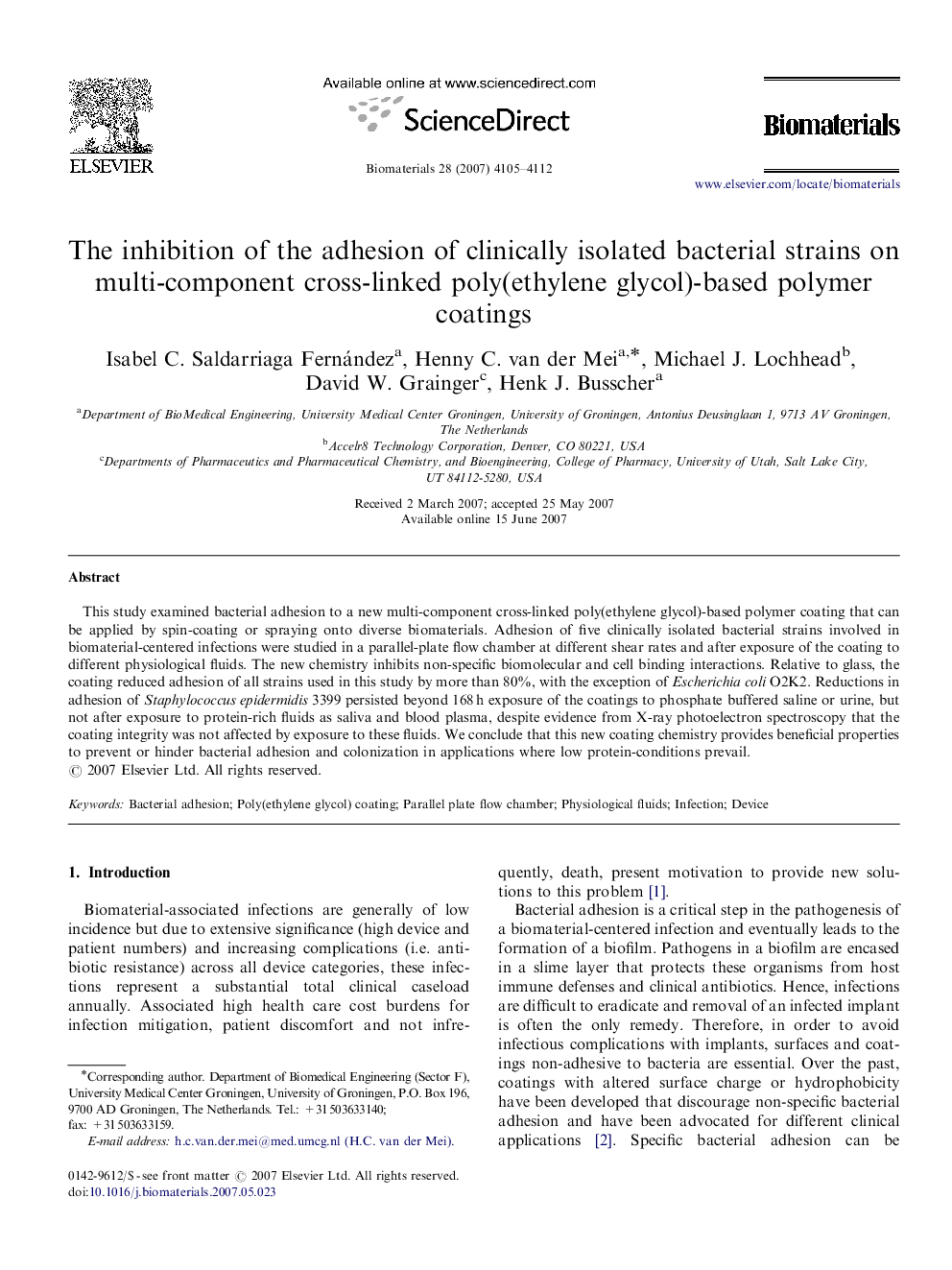| Article ID | Journal | Published Year | Pages | File Type |
|---|---|---|---|---|
| 11029 | Biomaterials | 2007 | 8 Pages |
This study examined bacterial adhesion to a new multi-component cross-linked poly(ethylene glycol)-based polymer coating that can be applied by spin-coating or spraying onto diverse biomaterials. Adhesion of five clinically isolated bacterial strains involved in biomaterial-centered infections were studied in a parallel-plate flow chamber at different shear rates and after exposure of the coating to different physiological fluids. The new chemistry inhibits non-specific biomolecular and cell binding interactions. Relative to glass, the coating reduced adhesion of all strains used in this study by more than 80%, with the exception of Escherichia coli O2K2. Reductions in adhesion of Staphylococcus epidermidis 3399 persisted beyond 168 h exposure of the coatings to phosphate buffered saline or urine, but not after exposure to protein-rich fluids as saliva and blood plasma, despite evidence from X-ray photoelectron spectroscopy that the coating integrity was not affected by exposure to these fluids. We conclude that this new coating chemistry provides beneficial properties to prevent or hinder bacterial adhesion and colonization in applications where low protein-conditions prevail.
